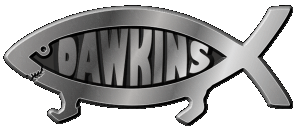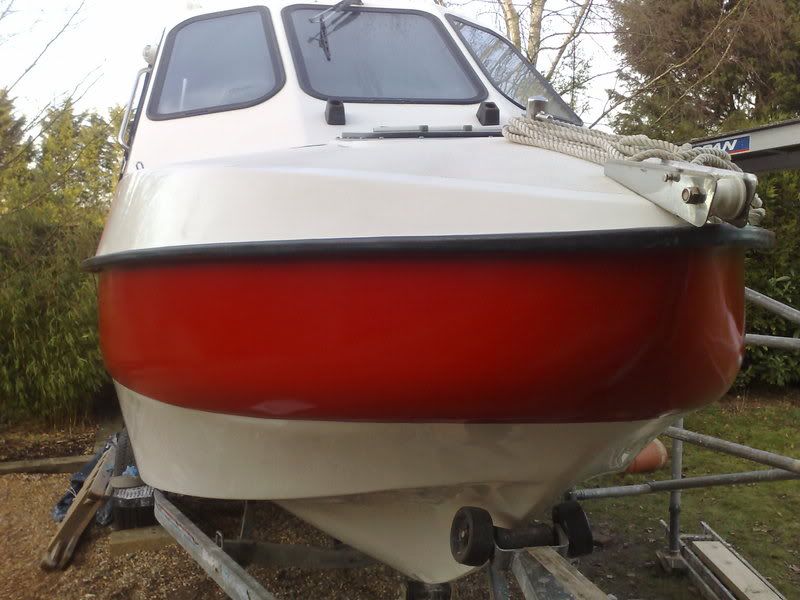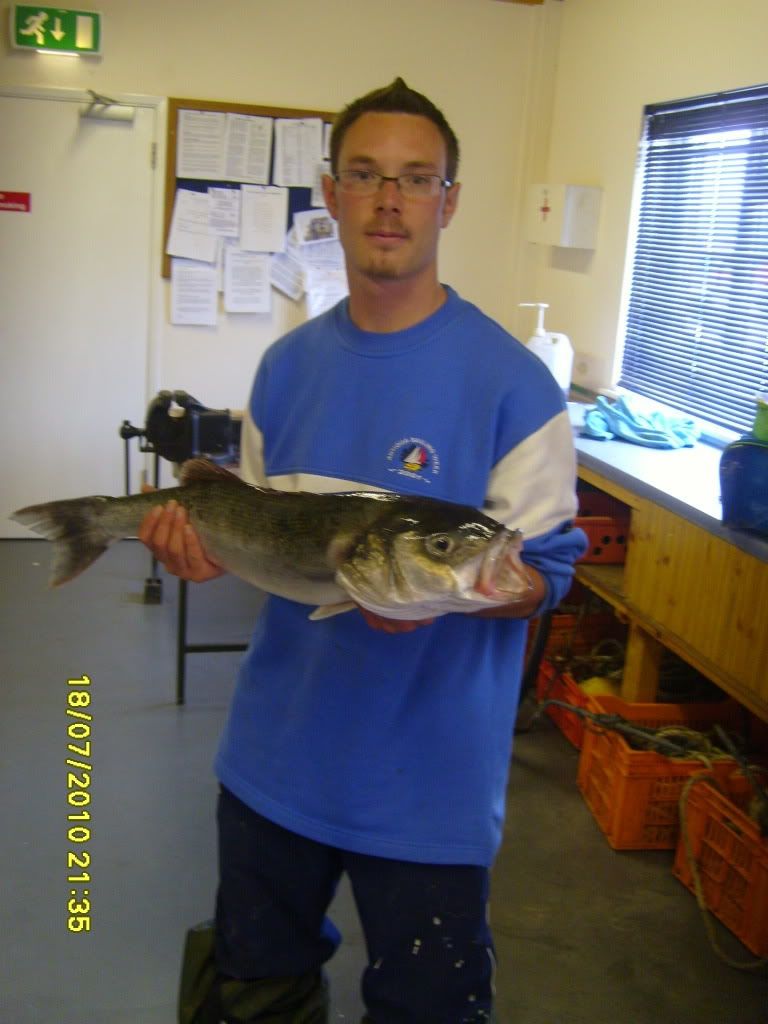Post by MJB on Jan 16, 2008 21:25:06 GMT
There seems to be a fair bit of interest in SWFF on this forum, so I thought I would post what I consider to be a list of the gear you need to be successful with the fly and hopfully you will avoid the costly pitfalls I encountered when I started 6 years ago. It needn't be too expensive to get kitted out either. I reckon £100 would get you set up with tackle that was suitable and up to the job. There are loads of dirt cheap 'starter outfits', and I started with one, but it was rubbish and replaced within a few weeks with better gear. Whilst you can teach yourself to flycast (I did, although it isn't pretty to look at, it does the job), a couple of hours with an instructor will give you a real headstart and worth the money.
Rods:
Most of the SWFFers I know would favour a single handed rod about 9' - 9'6" long with a line rating of #8 or #9 medium-fast or fast action for general use. You can pay anywhere from £50 to £650 but it is important to find a rod that suits you.
Reels:
I would favour a reel with a large arbour (LA) and it should be able to hold your fly line + 100 yds of backing line. Again the price range is huge and you can spend £400+ on something from Abel, but there are some cracking reels in the sub £100 price range which are all capable of doing what you need. I'm a big fan of the Scierra Avalanche 7/9 which costs £30ish, or if your budget can stretch a bit further there are some great machined aluminium reels like the Okuma Helios and the Vosseler DC4 for about £100.
Fly Lines:
The line should be of the same line rating as your rod. You will hear about overlining and underlining a flyrod, but as a beginner stick to the same rating. Lines come in 3 main styles: Double Taper (DT), Weight Forward (WF) and Shooting Heads (SH). My recommendation for a beginner would be a WF.
Flylines come in different densities from floating (F), through intermediate (I), to fast sinking (S). Most people will do the bulk of their fishing with a floating or intermediate line, although sinking lines would be the line of choice at deep water Pollock marks. Just to make things more confusing I use a 'ghost-tip' line for some of my fishing which is a floating line with the first 15' being a clear intermediate.
For a beginner assuming an 8 or 9 weight rod was being used I would recommend a weight forward floating or intermediate line. The line would be labelled as WF8F or WF8I. Standard trout lines are fine. Do not buy a specific saltwater line unless it specifies coldwater use. Tropic lines will be too stiff for U.K. use. Cortland, Snowbee, Shakespeare and Scientic Anglers all do good floating lines (Avoid Airflo floaters!). Cortland, Rio and Airflo do reasonable intermediates. Try and buy the best you can afford, particularly floaters.
Backing Line:
Flylines are typically 30metres long, so you need some line attached behind the flyline for when you catch that fish of a lifetime that goes screaming off into the sunset. There are allsorts of types of backing. I would suggest 20lb-30lb b.s. Dacron as a minimum but you can use a variety of specialist backing including braided mono and gel-spun line.
Leaders:
Attached to the business end of your fly line will be a loop of some kind. If there isn't then you will need to add one. By far the simplist way is a braided loop that just slips on the end and is secured by a sleeve (Instructions are in the packets.). To this you need to attach a length of line to connect your fly to. I would suggest 6'-9' is a managable length. You can buy specialist tapered leaders or make your own stepped leaders, but to be honest a single length of line straight through is fine. Clear nylon mono or flourocarbon is fine and breaking strains between 12lb and 20lb for general use although you may need to step down to 8lb or 10lb in bright conditions for fussy fish.
Flies:
Rather than go into great discussions about fly patterns ( I tie my own ), I'll suggest s few patterns that are available retail. I would recommend the following patterns for the predatory species like Bass, Pollock, Mackerel and the like:
Clouser Minnows, size 1 and 2 in chartruese and white, yellow and white, black and orange.
Sparse Clouser Minnows, size 4 in chartruese and white, orange and white, pink and white.
Decievers, size 1/0 in all white, chartruese and white, blue and white.
Surface patterns like Gurglers, Bobs Bangers or Fag Ash Lil. You can get popper flies, but these can be a bitch to cast.
The above selection will cover you for all situations in my opinion, but you can add flies like Surf Candies and various other baitfish patterns. There are a lot of flies on the market that I feel are dressed to heavily and would recommend talking to Austen at www.uksaltwaterflies.com or Richard at www.oceanflies.com about your needs.
Other Kit:
Chest waders: I wouldn't be without my breathables. Chesties will give you the option of getting closer to the fish or getting a better casting angle.
Hat and sunglasses: A wide brimmed hat or baseball cap combined with a set of polarising sunglasses will help with glare on the water and stop you getting a fly in your face from a wayward cast. I would suggest a pair of safety glasses for night use for the same reason.
Line tray: Various line trays are available to buy, but a washing up bowl with a bungee belt will do the same job. An essential piece of kit which stops your line getting snagged round your feet or being washed around in the tide.
Forceps and line snips: For obvious reasons.
Torch: The best SWFFing is dawn and dusk. You will need a small 'Mini Maglite' style torch or small headlamp for changing flies etc. Do NOT use one of these awful super bright headlamps that produce more illumination than the Eddystone light. You will spook every fish within 100yards!
Hope you find this useful,
Rods:
Most of the SWFFers I know would favour a single handed rod about 9' - 9'6" long with a line rating of #8 or #9 medium-fast or fast action for general use. You can pay anywhere from £50 to £650 but it is important to find a rod that suits you.
Reels:
I would favour a reel with a large arbour (LA) and it should be able to hold your fly line + 100 yds of backing line. Again the price range is huge and you can spend £400+ on something from Abel, but there are some cracking reels in the sub £100 price range which are all capable of doing what you need. I'm a big fan of the Scierra Avalanche 7/9 which costs £30ish, or if your budget can stretch a bit further there are some great machined aluminium reels like the Okuma Helios and the Vosseler DC4 for about £100.
Fly Lines:
The line should be of the same line rating as your rod. You will hear about overlining and underlining a flyrod, but as a beginner stick to the same rating. Lines come in 3 main styles: Double Taper (DT), Weight Forward (WF) and Shooting Heads (SH). My recommendation for a beginner would be a WF.
Flylines come in different densities from floating (F), through intermediate (I), to fast sinking (S). Most people will do the bulk of their fishing with a floating or intermediate line, although sinking lines would be the line of choice at deep water Pollock marks. Just to make things more confusing I use a 'ghost-tip' line for some of my fishing which is a floating line with the first 15' being a clear intermediate.
For a beginner assuming an 8 or 9 weight rod was being used I would recommend a weight forward floating or intermediate line. The line would be labelled as WF8F or WF8I. Standard trout lines are fine. Do not buy a specific saltwater line unless it specifies coldwater use. Tropic lines will be too stiff for U.K. use. Cortland, Snowbee, Shakespeare and Scientic Anglers all do good floating lines (Avoid Airflo floaters!). Cortland, Rio and Airflo do reasonable intermediates. Try and buy the best you can afford, particularly floaters.
Backing Line:
Flylines are typically 30metres long, so you need some line attached behind the flyline for when you catch that fish of a lifetime that goes screaming off into the sunset. There are allsorts of types of backing. I would suggest 20lb-30lb b.s. Dacron as a minimum but you can use a variety of specialist backing including braided mono and gel-spun line.
Leaders:
Attached to the business end of your fly line will be a loop of some kind. If there isn't then you will need to add one. By far the simplist way is a braided loop that just slips on the end and is secured by a sleeve (Instructions are in the packets.). To this you need to attach a length of line to connect your fly to. I would suggest 6'-9' is a managable length. You can buy specialist tapered leaders or make your own stepped leaders, but to be honest a single length of line straight through is fine. Clear nylon mono or flourocarbon is fine and breaking strains between 12lb and 20lb for general use although you may need to step down to 8lb or 10lb in bright conditions for fussy fish.
Flies:
Rather than go into great discussions about fly patterns ( I tie my own ), I'll suggest s few patterns that are available retail. I would recommend the following patterns for the predatory species like Bass, Pollock, Mackerel and the like:
Clouser Minnows, size 1 and 2 in chartruese and white, yellow and white, black and orange.
Sparse Clouser Minnows, size 4 in chartruese and white, orange and white, pink and white.
Decievers, size 1/0 in all white, chartruese and white, blue and white.
Surface patterns like Gurglers, Bobs Bangers or Fag Ash Lil. You can get popper flies, but these can be a bitch to cast.
The above selection will cover you for all situations in my opinion, but you can add flies like Surf Candies and various other baitfish patterns. There are a lot of flies on the market that I feel are dressed to heavily and would recommend talking to Austen at www.uksaltwaterflies.com or Richard at www.oceanflies.com about your needs.
Other Kit:
Chest waders: I wouldn't be without my breathables. Chesties will give you the option of getting closer to the fish or getting a better casting angle.
Hat and sunglasses: A wide brimmed hat or baseball cap combined with a set of polarising sunglasses will help with glare on the water and stop you getting a fly in your face from a wayward cast. I would suggest a pair of safety glasses for night use for the same reason.
Line tray: Various line trays are available to buy, but a washing up bowl with a bungee belt will do the same job. An essential piece of kit which stops your line getting snagged round your feet or being washed around in the tide.
Forceps and line snips: For obvious reasons.
Torch: The best SWFFing is dawn and dusk. You will need a small 'Mini Maglite' style torch or small headlamp for changing flies etc. Do NOT use one of these awful super bright headlamps that produce more illumination than the Eddystone light. You will spook every fish within 100yards!
Hope you find this useful,
















